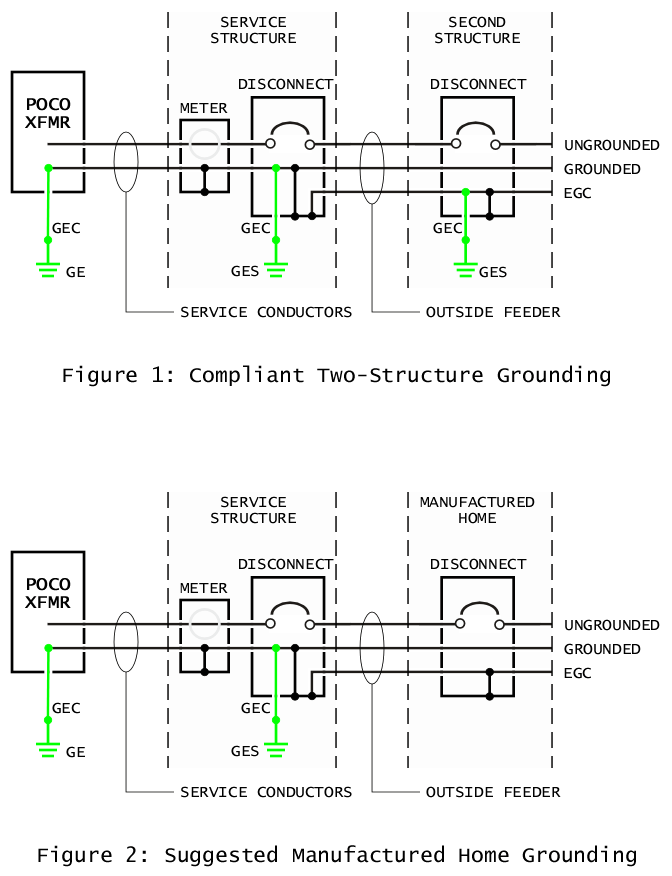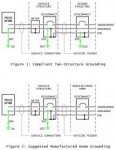What I see in your drawing for the mobile home is a service that has a grounding electrode with a grounding electrode conductor ran to it and then an equipment grounding conductor ran to the panel in the mobile home.
That is correct.
What I don?t see is a separate structure that needs to establish its own electrode system. I see this conductor between the two panels being nothing more than an equipment grounding conductor.
What does it take for you to call something a separate building or structure? Typically, anything supplied by an outside feeder not part of the originating structure is a separate structure. We know this can include an Article 550 installation because of Table 225.2.
Once we accept that 550 does not require an electrode system to be installed at the mobile home itself and accept that it is the rules in 550 that prevent the service equipment from being mounted on the mobile home then we can understand that the conductor between the two panels is nothing more than an equipment grounding conductor and plays no role in the grounding electrode system
Let's be more specific. We are discussing the requirement of a GES at a manufactured home... not a mobile home. Additionally, one which is supplied by hard-wired feeder, not cord-and-plug connected.
Furthermore, I am not contesting that the grounding conductor run with the feeder is called an EGC. What I am saying is, without a GES at the mfd home, any current which must flow to earth on the electrical system must be carried entirely by that EGC to earth. With a GES at the home, a more direct and lower resistance path is established, thereby reducing the current on said EGC.
[Being that we are so quick to jump on 250.32 and the separate building or structure I am surprised that no one has yet said anything about 225.39(C) and a 50 amp supply cord that has some mobile homes connected to the service equipment. Are these feeders not outside and is the mobile home and is it not a one family dwelling in most cases?
As I said above, I don't consider mobile homes or cord-and-plug connected manufactured homes as part of the discussion. Opon being supplied by hard-wired feeder, a manufactured home is no longer as easily movable as one cord-and-plug connected.
With all this discussion about a mobile home and 250.32 why has no one yet included 551, 552, 553, and 555 all of which does not require a grounding electrode to be established at the separate building or structure. All these allow the connection between the power supplying that separate structure and the structure to be grounded with the equipment grounding conductor.
Of the Articles mentioned, only 555 is listed in Table 225.2. I have not reviewed it as I do not consider other Chapter 5 Articles as having any bearing on the discussion. As the title of Chapter 5 indicates, these Articles cover special occupancies, so each will have its own nuances.



